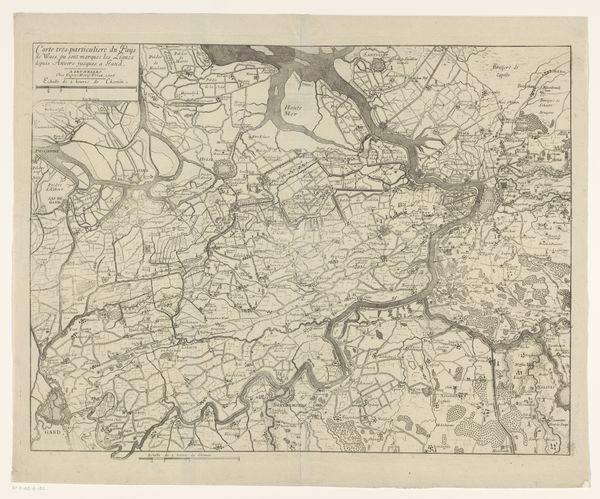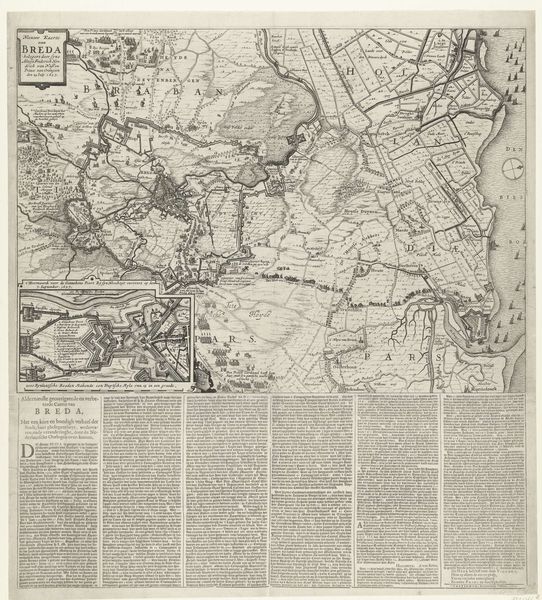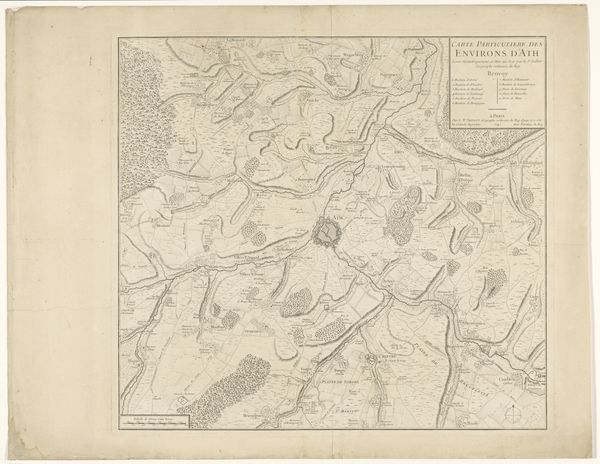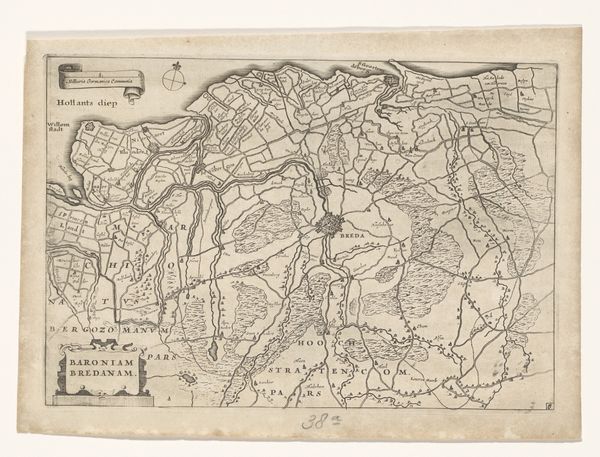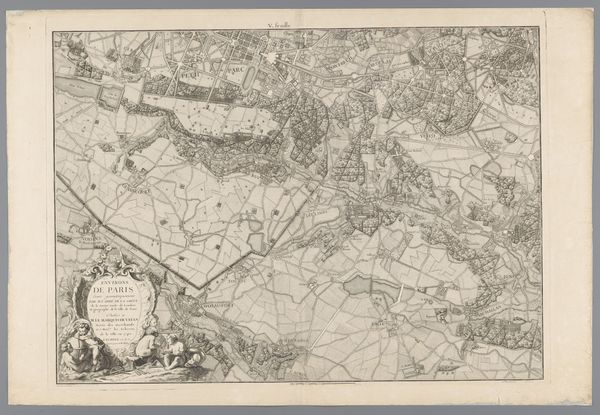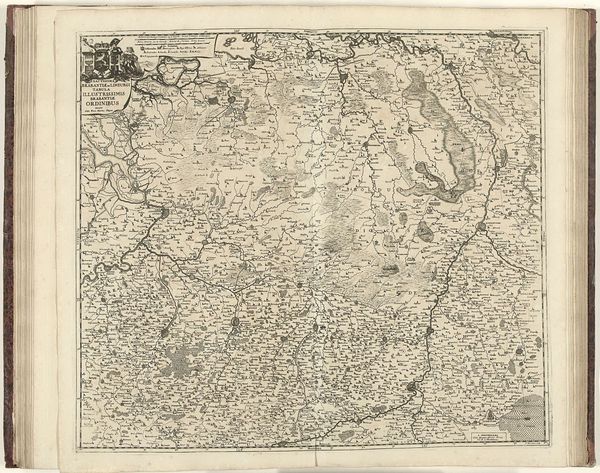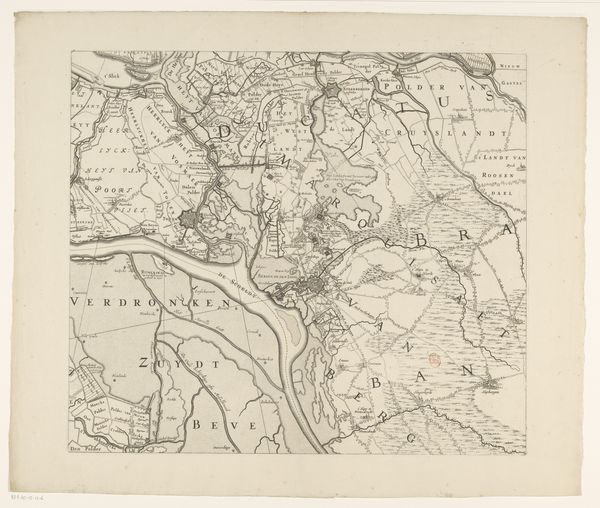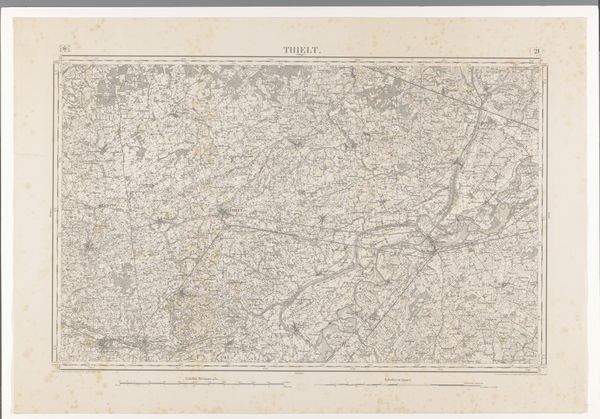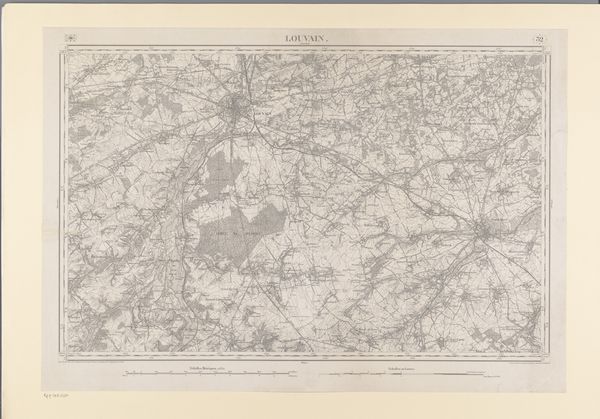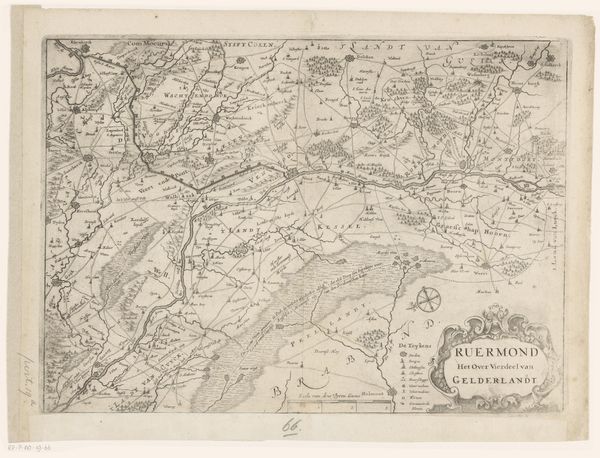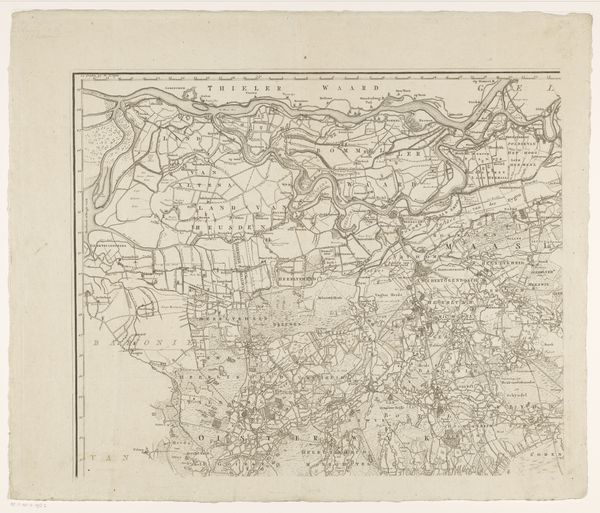
print, engraving
#
dutch-golden-age
# print
#
old engraving style
#
linocut print
#
geometric
#
line
#
cityscape
#
engraving
Dimensions: height 535 mm, width 668 mm
Copyright: Rijks Museum: Open Domain
Editor: We’re looking at “Kaart van de omgeving van Maastricht,” a 1748 engraving. The incredible detail is immediately striking; it feels both artistic and scientific. What compositional elements stand out to you? Curator: Observe how the geometric lines carve the landscape. It’s an essay in texture—a deliberate interplay between figure and ground. Note the artist's commitment to rendering every tree and field with near-obsessive mark-making, to an all-over composition. Does this not evoke a sense of meticulously ordered chaos? Editor: I hadn't considered the "ordered chaos." Is that a quality of engravings, or is it more particular to this piece? Curator: Consider the materiality; the very act of engraving forces precision. Each etched line dictates the form. It presents a compelling study in the constraints of the medium and the artist's ability to transcend them. Notice, as well, how the network of lines almost renders the surface of the print weightless, despite the labor involved in its creation. Editor: So it’s about appreciating the artist's technique within those self-imposed limitations? Curator: Precisely. And within those limitations, the lines build up, and density is all: fields distinguished by subtle alterations, differentiating surface quality by tiny variation. Editor: I now see it less as just a map and more as a technical triumph with surprising textures. Thank you for your insight. Curator: Indeed. Analyzing its formal qualities helps us recognize it's more than just representational, but an artwork.
Comments
No comments
Be the first to comment and join the conversation on the ultimate creative platform.
